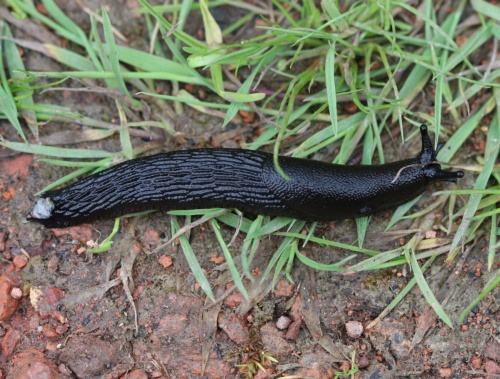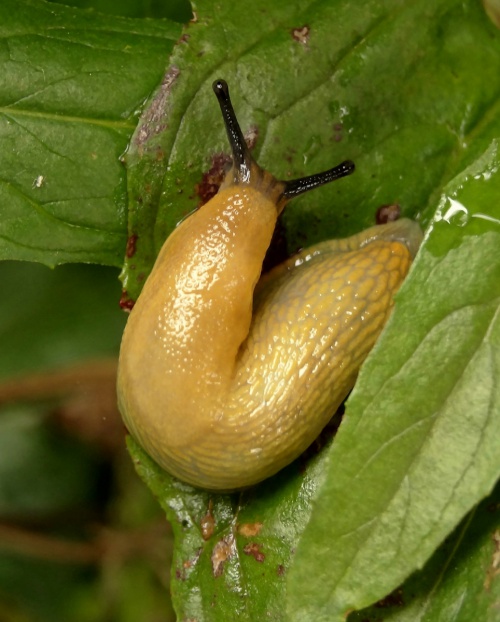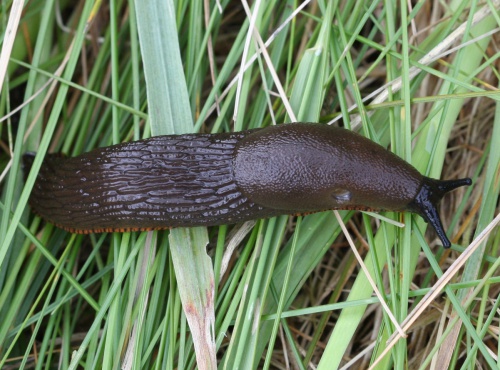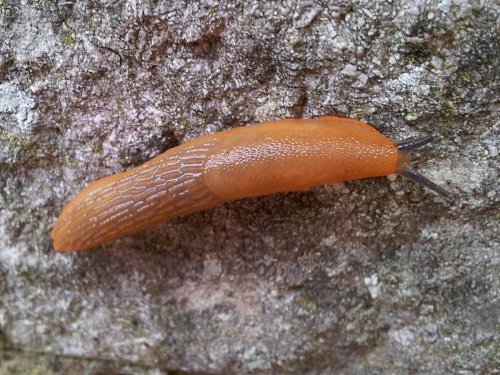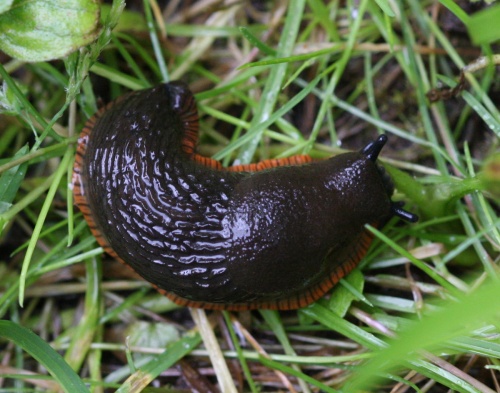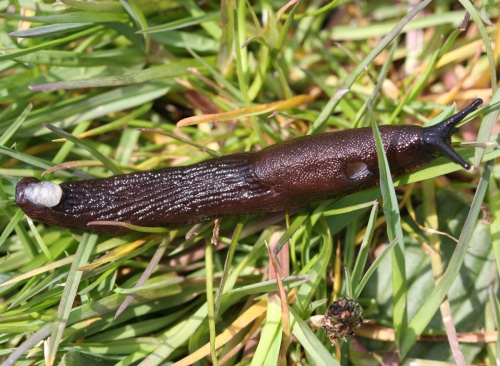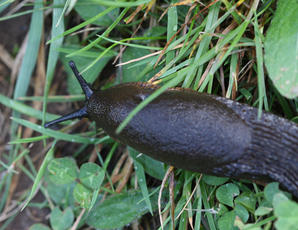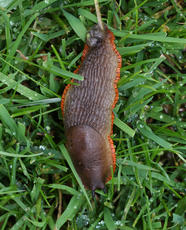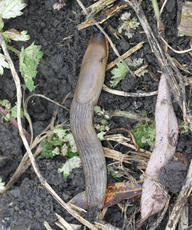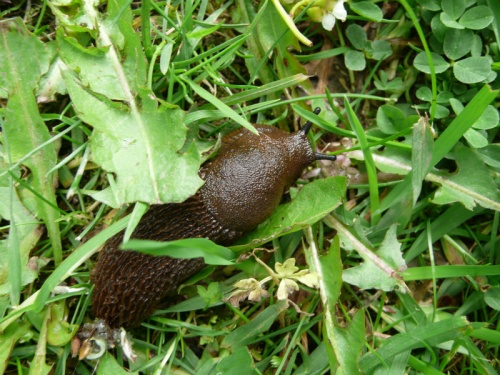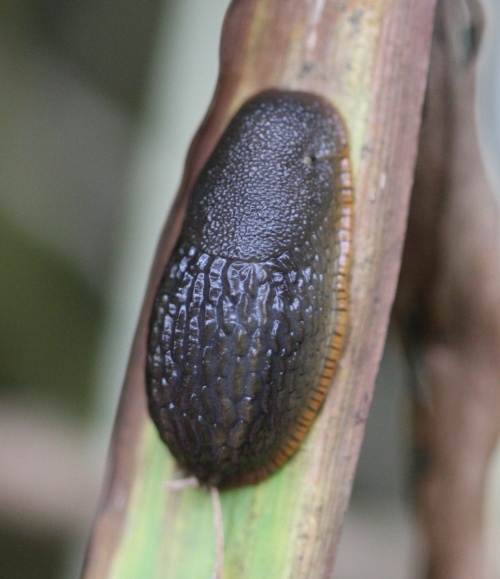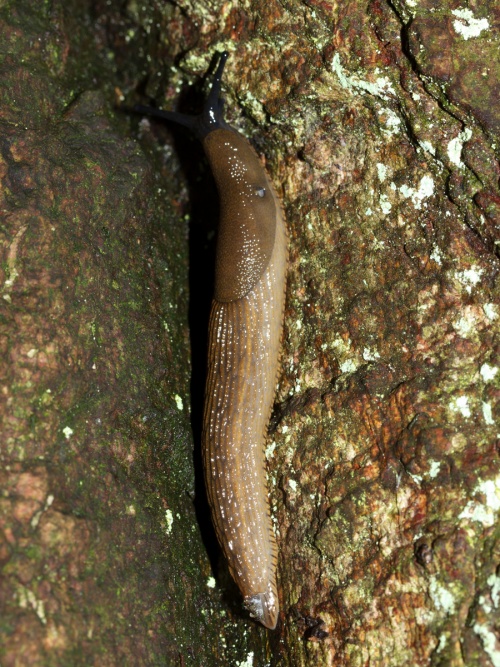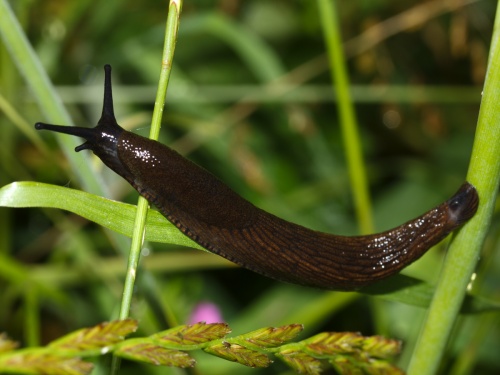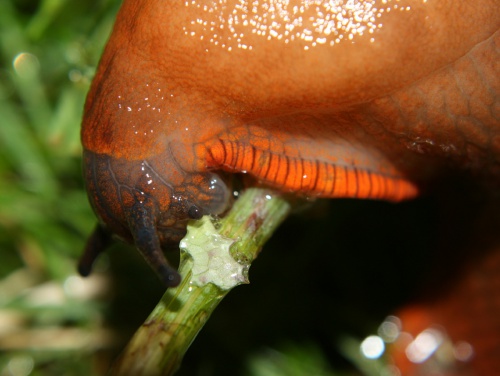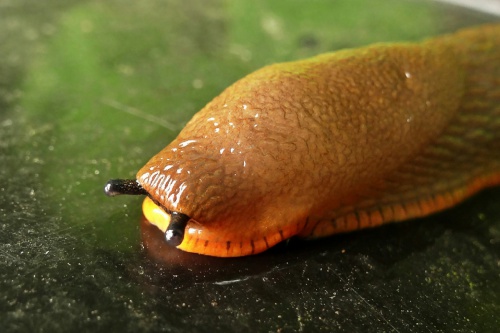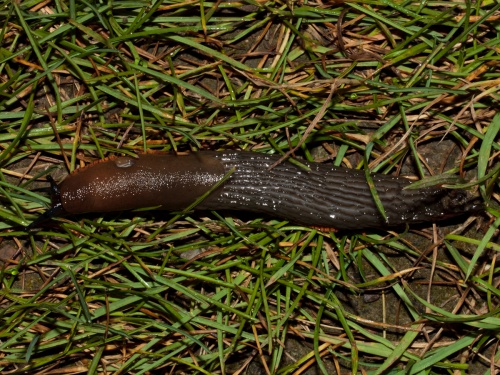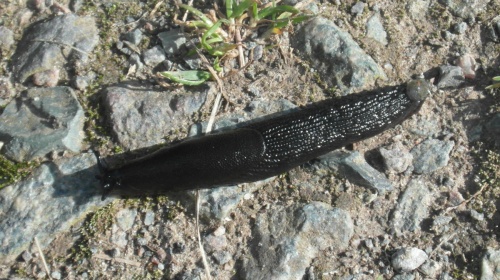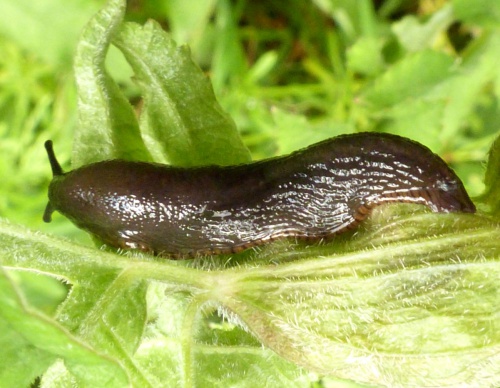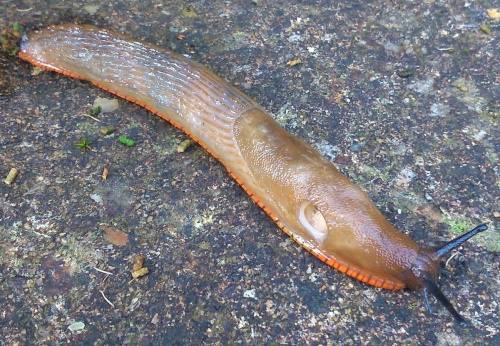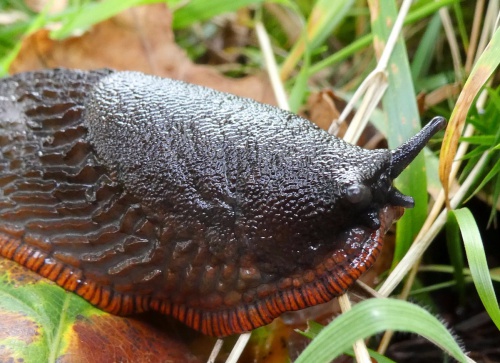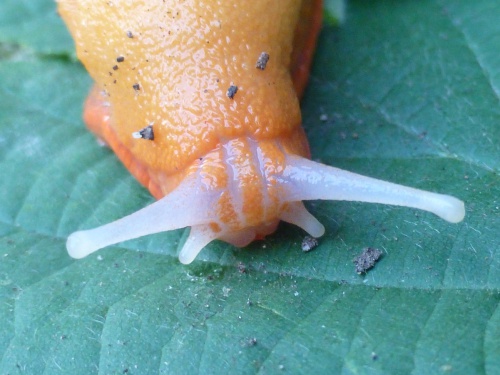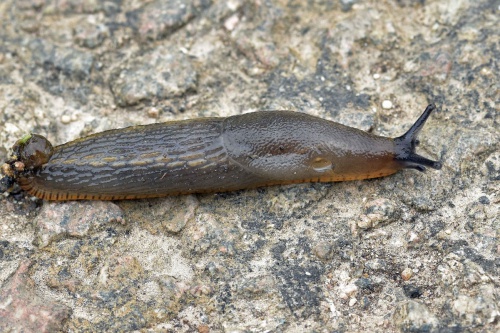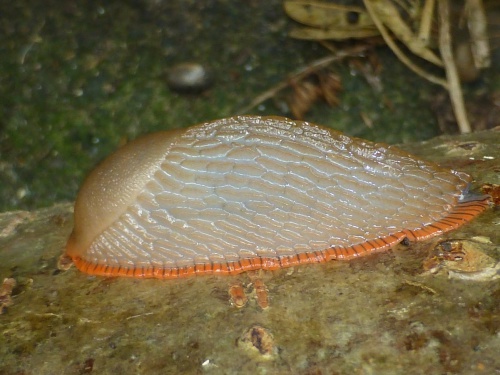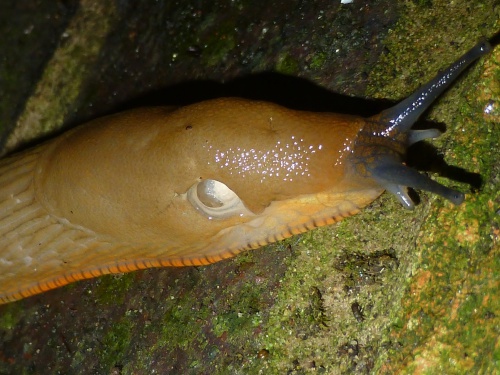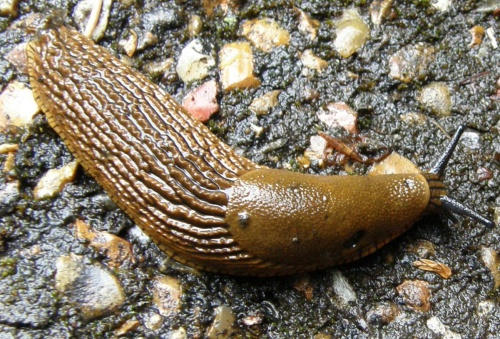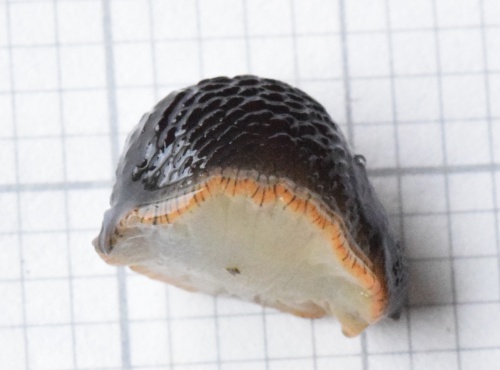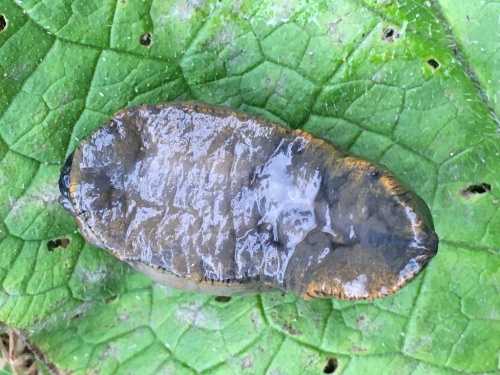Black Slug - Arion ater agg.
Whilst Arion ater is a very common slug, it belongs to a species complex that can only be 100% differentiated by dissecting the genitalia so it is usual to record them as part of an aggregate group. There are five species in this complex Arion ater group complex: Arion ater, A. rufus, A. vulgaris, A. flagellus and A. sp. Davies (a new species not yet fully described). These slug species range from 75-180 mm in length at maturity. Despite the common name, they may be various colours, including brown, black, grey, green, orange or red in colour. They are large and bulky with long, coarse tubercles on the side and back. All Arion species lack a keel along their back and are sometimes referred to as 'round-back' slugs. The contracted body is bell-shaped. The sole of the foot may be dark or tripartite (pale with a black vertical line down the centre). The foot fringe may be red, orange, yellow or grey and all with dark stripes. The mucus of this slug group is colourless, though very sticky.
The juveniles of these species have an even wider range of colours and also have lateral stripes, which disappear as they mature. Juveniles of the Arion ater complex may therefore be confused with adults of other Arion species.
DNA analysis of the species in this group does not always show distinct differences so it is understood that some hybridisation may occur and that species divergence is incomplete.
The only safe way to confirm the species identity is either dissection or DNA analysis (and even then hybrids may be found). However there are a few physical differences that point to a particular species, even if not sufficient evidence on their own.
Our native Arion ater, when irritated contracts and sways from side to side. The rocking behaviour can be seen here on YouTube. Arion rufus has also been occasionally observed rocking like this but less commonly.
Arion rufus tends to have a bright foot-fringe, normally brighter than the body colour, though this is not a totally reliable ID feature. A few individuals may have an orange sole and this is a feature not found in the other aggregate species.
Arion vulgaris shares the same colour variation and other external features but often has a dark sooty grey sole which is darker than the body. It can also have dark grey between the tubercles and the rim of the breathing pore may also appear dark.
Arion flagellus has large tubercles and often has a greenish colour. Whatever the colour of body, the sole is always pale, usually with a faint greenish tinge. The lines on the foot fringe do not reach far into the sole, if indeed they are present at all.Specimens with these features may be identified as A. flagellus but less well-marked specimens should be recorded as part of the aggregate.
Common in any well vegetated area, including gardens.
After rain or at night - readily found from spring to autumn.
An omnivorous species, eating carrion and dung as well as vegetable matter. It prefers rotting vegetation to living plants and consequently rarely does much harm in the garden. Largely nocturnal, but large numbers have been seen on freshly mown roadside verges feeding on the grass after daytime rain. Clusters of their pearly-white spherical eggs, about 5 mm in diameter, are often dug up in the garden and compost heaps.
Extremely common and widespread throughout Britain.
Very common and widespread in Leicestershire and Rutland.
Leicestershire & Rutland Map
Enter a town or village to see local records
MAP KEY:
Yellow squares = NBN records (all known data)
Coloured circles = NatureSpot records: 2020+ | 2015-2019 | pre-2015
UK Map
Species profile
- Species group:
- Slugs & Snails
- Kingdom:
- Animalia
- Order:
- Pulmonata
- Family:
- Arionidae
- Records on NatureSpot:
- 463
- First record:
- 27/07/1987 (Rundle, Adrian)
- Last record:
- 08/05/2024 (Nicholls, David)
Total records by month
% of records within its species group
10km squares with records
The latest images and records displayed below include those awaiting verification checks so we cannot guarantee that every identification is correct. Once accepted, the record displays a green tick.
In the Latest Records section, click on the header to sort A-Z, and again to sort Z-A. Use the header boxes to filter the list.


